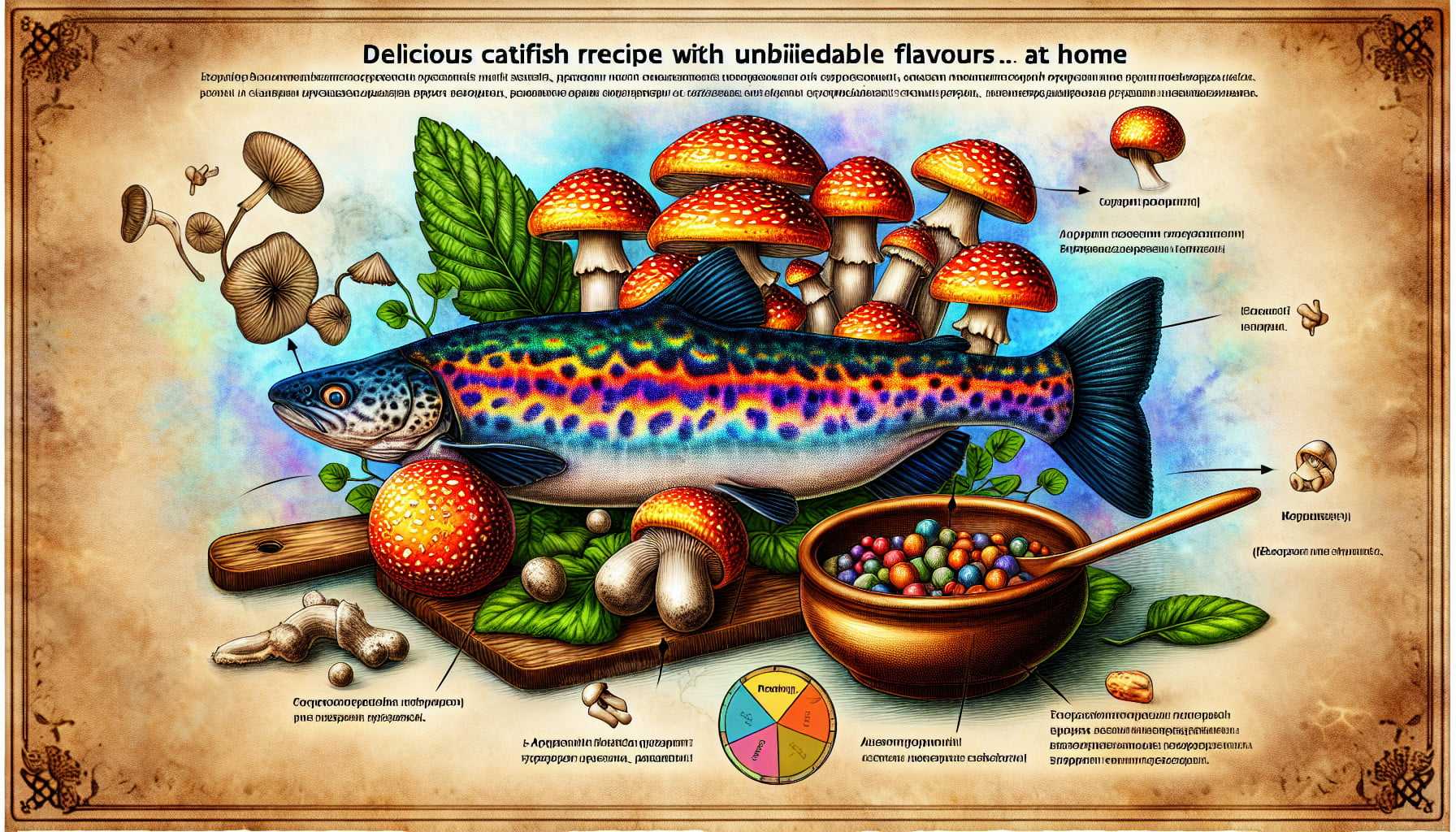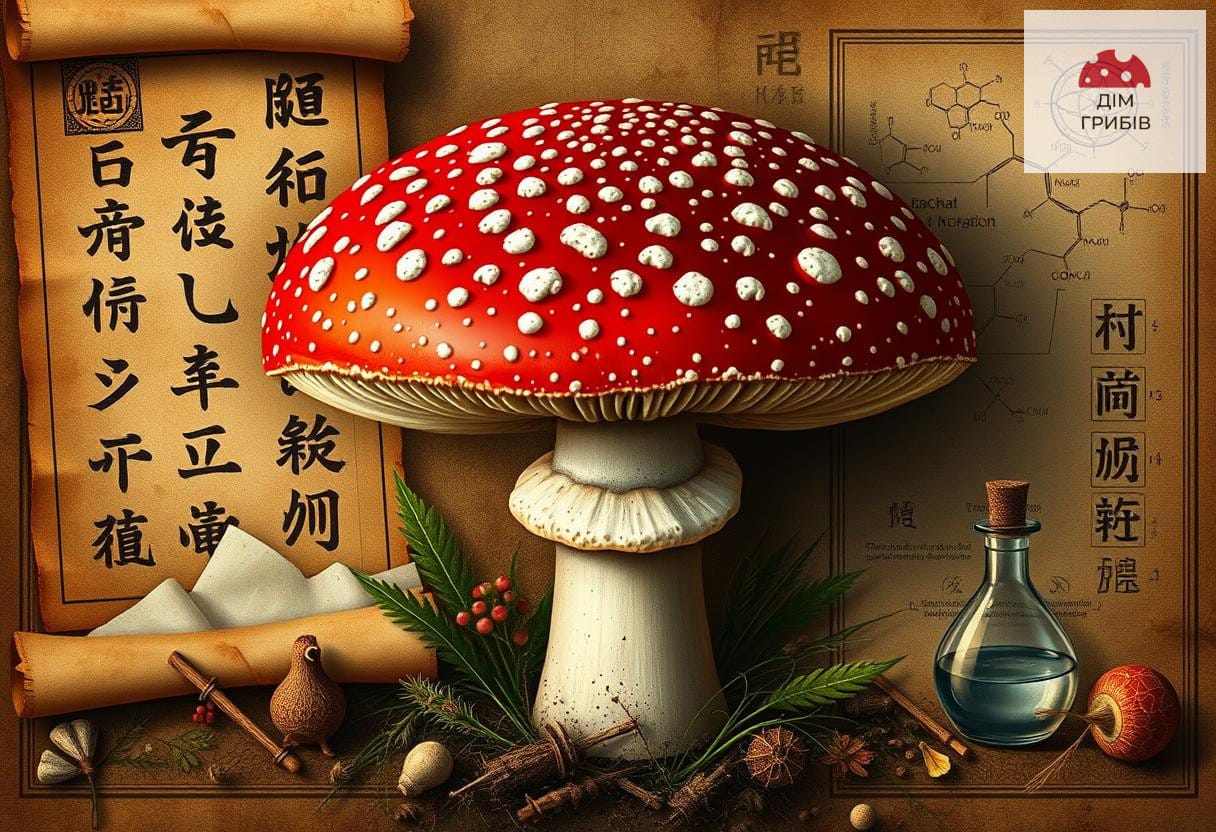The fascinating history of the fly agaric: ancient legends, traditions and secrets of treatment

The fascinating story of the fly agaric
The history of the fly agaric is an extremely interesting and multifaceted topic, combining elements of mythology, culture and medicine. This article deeply analyzes the path of the fly agaric from ancient legends to modern research aimed at integrating traditional knowledge into clinical practice. We will consider how folklore and myths inspired ancient healers and doctors, as well as how modern technology helps to restore and update traditional recipes. For a more detailed introduction to the topic, we recommend that you read The History of Magic Mushrooms and the Secrets of Traditional Medicine.
In this introductory chapter, we will analyze how the history of the fly agaric has influenced civilizations of different eras, how this mushroom found its place in ritual practices and healing processes, and how modern researchers use ancient knowledge to develop new therapeutic approaches. The importance of preserving traditional knowledge lies not only in its historical value, but also in its potential for creating innovative treatment methods. It should be noted that numerous studies on this issue reveal new aspects of the use of natural resources, which find resonance in both scientific and cultural circles.
The importance of the fly agaric as a bridge between ancient beliefs and modern science has become an impetus for interdisciplinary research. This approach allows us to restore forgotten recipes and adapt them to the requirements of modern medicine, which is especially important in the context of the growing interest in natural remedies for health maintenance. More information about innovative approaches to the use of natural resources can be found in the article Innovations in Natural Medicine.
History of the fly agaric and cultural context
Legends, folklore and real facts
Since ancient times, the fly agaric has constantly appeared in numerous legends and fairy tales, where it was associated with mystical rites, witchcraft and the power of nature. Archaeological finds and literary sources indicate that in many cultures this mushroom had a sacred meaning. Medieval manufactories even used the symbolism of the fly agaric to convey knowledge about the transcendental states of man.
It is known that in Scandinavian mythology the fly agaric was associated with gods and supernatural beings, and in Slavic folk beliefs – with spells and curses. Such versatility allows researchers to restore maps of the symbolic world of ancient peoples. Modern historians and ethnographers, analyzing these phenomena, often refer to Encyclopedia Britannica as an expert source for historical verification of these facts.
For clarity, we have prepared a table comparing the main cultural contexts of the use of fly agaric in different regions:
| Region | Symbolic meaning | Application |
|---|---|---|
| Scandinavia | Divine inspiration, mystical rituals | Worship rituals, shamanic practices |
| Eastern Europe | Protection from evil forces, mystical symbol | Treatment, facilitation of spiritual sessions |
| Middle East | A symbol of transformation, the mystery of life and death | Ritual ceremonies, treatment with natural ingredients |
Amanita muscaria in traditional rites and celebrations
Amanita muscaria has been and remains an important element of various cultural rituals. In many peoples of the world it was used during ceremonies to achieve changes in consciousness or establish contact with the other world. Ritual drinks based on amanita muscaria, amulets and decorative symbols emphasized the mystical power of this mushroom.
The main aspects of using fly agaric in traditional rituals can be listed as follows:
- Use during festive ceremonies to establish a connection with ancestors;
- Use in magical practices as a means of healing or protection;
- Creating amulets and talismans that influence a person's fate.
Such traditional knowledge has been passed down from generation to generation and finds its modern reflection in folk medicine research. Information about such rituals and folklore can be found in the article Ancient Rites and Traditions.
The history of fly agaric in traditional medicine
Ancient recipes and remedies

In traditional medicine, fly agaric was used as an important component of medicinal mixtures. Ancient healers created recipes where a complex of natural ingredients was intended to strengthen the body, improve digestion and even relieve pain. Many of these recipes contained fly agaric along with other herbs, berries, honey and plant extracts, which made it possible to achieve a synergistic effect.
Below is a list of the basic principles of using fly agaric in ancient medicine:
- Correct dosage of components to avoid toxic reactions;
- Combining fly agaric with other natural medicines to enhance the therapeutic effect;
- Use for preventive purposes to prevent chronic diseases.
Ancient documents and folklore indicate that medicinal mixtures with fly agaric were used for both physical and mental health. For those who wish to study the history of folk medicine in more detail, we recommend visiting Traditions of Folk Medicine. It is also worth consulting the research on the platform NCBI to obtain up-to-date clinical information.
Modern research and integration of traditional knowledge
Today, the scientific community continues to explore the potential of fly agaric to develop safe and effective drugs. Modern researchers analyze traditional recipes, combining them with the latest technologies to create combined therapeutic approaches that meet the high quality standards of modern medicine.
Scientists are analyzing the physicochemical properties of the active ingredients contained in the fly agaric to restore ancient recipes. This approach allows for the creation of new drugs that can combat relapses of chronic diseases and maintain the overall balance of the body. Among the key areas of current research are:
- Biochemical analysis of active components;
- Studying the synergistic effect of a complex of ingredients;
- Development of new dosage formats taking into account traditional knowledge.
The international community is also showing a growing interest in integrating traditional recipes into modern medicine. Modern healthcare systems increasingly turn to natural resources, as the modern world demands. For example, the World Health Organization (WHO) confirms that studying natural components may be the key to developing effective treatment strategies.
The results of modern research allow us to build a bridge between traditional folk medicine methods and modern treatment protocols. One example of such integration is the development of combination drugs that use the synergy of natural components from fly agaric and modern synthetic agents, which proves the effectiveness and safety of treatment methods. Follow the news in this area in the Future of Medicine section of our website.
Latest technologies and future prospects
Integrating traditional recipes and modern science
Today, more and more researchers and practitioners are paying attention to the potential of integrating traditional knowledge with modern scientific achievements. Thanks to this, new methods are emerging, aimed at both the prevention and treatment of various chronic diseases. An important task is not only the restoration of ancient recipes, but also their adaptation to modern quality and safety requirements.
Key benefits of such integration include:
-
- Increasing the effectiveness of treatment through the use of the synergistic effect of natural ingredients;

- Reduction of side effects due to the natural origin of the formulations;
- Providing opportunities for the development of personalized treatment approaches.
Innovative research allows us to study the bioactive substances of fly agaric not only in the context of traditional medicine, but also from the standpoint of modern pharmacology. Such work stimulates cooperation between research centers and clinical laboratories, which in the future may lead to the emergence of new therapeutic drugs. More detailed information about current scientific achievements can be obtained by referring to specialized reviews on the websites of leading scientific journals.
Prospects for further research
The future of fly agaric research is closely linked to the preservation of cultural heritage and the introduction of innovative techniques into modern medicine. Key areas include:
- In-depth biochemical analysis of active substances;
- Clinical trials of drugs based on traditional recipes;
- Interdisciplinary research that combines history, cultural studies, and modern pharmacology.
For example, modern conferences and symposia dedicated to natural healing methods actively discuss the issue of synthesizing traditional medicine with innovative technologies. This opens up new opportunities for the development of safe alternatives to modern pharmaceuticals. Thanks to the history of the fly agaric, which has accumulated a lot of knowledge of ancient practitioners, future researchers are able to create innovative tools for the treatment of serious diseases.
The history of the fly agaric, as a historical and cultural phenomenon, continues to inspire researchers to seek answers to questions regarding the nature of its healing powers. By combining traditional knowledge with advanced technology, modern medicine has every chance to develop, using the potential of nature to create new treatment methods.
Conclusions and prospects
Key findings: a bridge between the past and the present
In summary, the history of the fly agaric has always been a powerful tool for understanding the changing perception of natural resources, from the sacred symbolism of ancient rituals to modern clinical developments. Ancient recipes based on the use of the fly agaric are now supported by innovative research aimed at developing new therapeutic approaches.
The modern integration of traditional knowledge with the latest technologies opens up opportunities for the creation of safe and effective treatments that meet the demands of modern society. This process is a vivid example of how historical heritage can become the basis for innovative developments. We see that the history of the fly agaric not only expands our understanding of cultural traditions, but also stimulates the development of practical methods that can influence the future of medicine.
The future of research and innovation
The prospects for further research in the field of fly agaric use are inspiring scientists to develop new methods that combine traditional knowledge with modern scientific approaches. A key direction focuses on integrating ancient recipes into modern clinical protocols for the treatment of various diseases, including chronic conditions, which is more relevant than ever before.
In the context of global health challenges, the synthesis of traditional practices and modern technologies creates unparalleled opportunities for innovation. Collaboration between historians, cultural scientists, and pharmacologists opens a new path to developing treatment regimens that take into account both the accumulated experience of past generations and modern scientific achievements.
Thus, the history of the fly agaric not only inspires researchers of the past, but also forms the basis for future discoveries, making the bridge between tradition and science even stronger. Modern technologies allow us to reconstruct forgotten recipes that have preserved ancient wisdom and adapt them for modern health care needs.
Through integration with advanced techniques, the future of medicine promises to be more humane, focused on natural resources, combining the wisdom of the past with the innovations of the present.